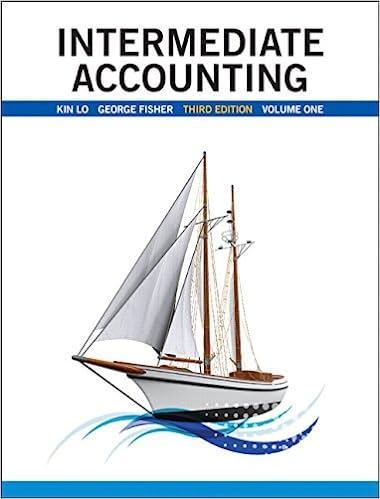

The Internal audit department of Southampton plc are commencing the planning of the internal audit of the group for the year ending 31" December 2022. Southampton plc is a paint manufacturer and has been trading for over 50 years, it operates from one central site, which includes the production facility, warehouse and administration offices. However, it has a subsidiary Grealish Co, a retailer of ladies clothing and accessories. Southampton plc sells all of its goods to large home improvement stores, with 60% being to one large chain store Homewares. The company has a one-year contract to be the sole supplier of paint to Homewares. It secured the contract through significantly reducing prices and offering a four-month credit period, the company's normal credit period is one month. Goods in/purchases In recent years, Southampton plc has reduced the level of goods directly manufactured and instead started to import paint from South Asia. Approximately 60% is imported and 40% manufactured. Within the production facility is a large amount of old plant and equipment that is now redundant and has minimal scrap value. Purchase orders for overseas paint are made six months in advance and goods can be in transit for up to two months. Southampton plc accounts for the inventory when it receives the goods. To avoid the disruption of a year-end inventory count, Southampton plc has this year introduced a continuous/perpetual inventory counting system. The warehouse has been divided into 12 areas and these are each to be counted once over the year. The counting team includes a member of the internal audit department and a warehouse staff member. The following procedures have been adopted; 1. The team prints the inventory quantities and descriptions from the system and these records are then compared to the inventory physically present. 2. Any discrepancies in relation to quantities are noted on the inventory sheets, including any items not listed on the sheets but present in the warehouse area. 3. Any damaged or old items are noted and they are removed from the inventory sheets. 4. The sheets are then passed to the finance department for adjustments to be made to the records when the count has finished. 5. During the counts there will continue to be inventory movements with goods arriving and leaving the warehouse. At the year-end it is proposed that the inventory will be based on the underlying records. Traditionally Southampton plc has maintained an inventory provision based on 1% of the inventory value, but management feels that as inventory is being reviewed more regularly it no longer needs this provision. Required: Fully explain how you would plan an internal audit assignment to review the above system. This should include an explanation of the risks around which the assignment would be designed. (100 marks) Answer: Bil. Internal audit assignment 1. Explanation on audit assignment Risk explanation 2. 3. 4. 5. 6. 7. 8. 9. 10. Notes: Please include references if any The Internal audit department of Southampton plc are commencing the planning of the internal audit of the group for the year ending 31" December 2022. Southampton plc is a paint manufacturer and has been trading for over 50 years, it operates from one central site, which includes the production facility, warehouse and administration offices. However, it has a subsidiary Grealish Co, a retailer of ladies clothing and accessories. Southampton plc sells all of its goods to large home improvement stores, with 60% being to one large chain store Homewares. The company has a one-year contract to be the sole supplier of paint to Homewares. It secured the contract through significantly reducing prices and offering a four-month credit period, the company's normal credit period is one month. Goods in/purchases In recent years, Southampton plc has reduced the level of goods directly manufactured and instead started to import paint from South Asia. Approximately 60% is imported and 40% manufactured. Within the production facility is a large amount of old plant and equipment that is now redundant and has minimal scrap value. Purchase orders for overseas paint are made six months in advance and goods can be in transit for up to two months. Southampton plc accounts for the inventory when it receives the goods. To avoid the disruption of a year-end inventory count, Southampton plc has this year introduced a continuous/perpetual inventory counting system. The warehouse has been divided into 12 areas and these are each to be counted once over the year. The counting team includes a member of the internal audit department and a warehouse staff member. The following procedures have been adopted; 1. The team prints the inventory quantities and descriptions from the system and these records are then compared to the inventory physically present. 2. Any discrepancies in relation to quantities are noted on the inventory sheets, including any items not listed on the sheets but present in the warehouse area. 3. Any damaged or old items are noted and they are removed from the inventory sheets. 4. The sheets are then passed to the finance department for adjustments to be made to the records when the count has finished. 5. During the counts there will continue to be inventory movements with goods arriving and leaving the warehouse. At the year-end it is proposed that the inventory will be based on the underlying records. Traditionally Southampton plc has maintained an inventory provision based on 1% of the inventory value, but management feels that as inventory is being reviewed more regularly it no longer needs this provision. Required: Fully explain how you would plan an internal audit assignment to review the above system. This should include an explanation of the risks around which the assignment would be designed. (100 marks) Answer: Bil. Internal audit assignment 1. Explanation on audit assignment Risk explanation 2. 3. 4. 5. 6. 7. 8. 9. 10. Notes: Please include references if any








